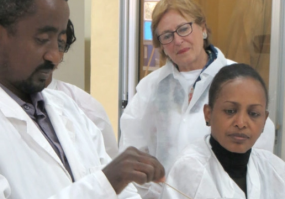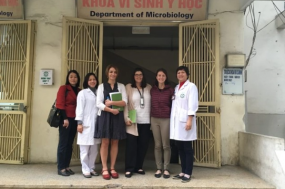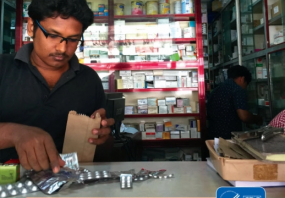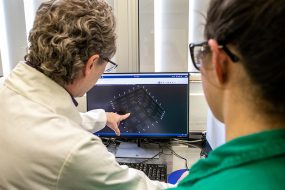Detect, Prevent, and Respond to Antimicrobial Resistance
When germs like bacteria and fungi develop the ability to defeat the drugs designed to kill them, this is known as antimicrobial resistance (AR). AR causes antibiotics and antifungals to lose their effectiveness, meaning we lose the ability to treat infections and control these public health threats.
CDC’s International Infection Control Branch (IICB) aims to help countries improve their capacity to identify and combat AR in healthcare settings so that resistant pathogens do not spread within hospitals, to communities, or across international borders.
Why Our Work Matters
In 2019, AR killed at least 1.27 million people worldwide and was associated with nearly 5 million deaths, more than either HIV or malaria. That same year, the World Health Organization declared AR to be one of the top 10 public health threats facing humanity.
AR has been identified in all regions of the world and is especially concerning in healthcare settings because this is where five of the six bacteria causing the most deaths associated with AR are predominantly found. Resistant bacteria are being detected in hospitals more frequently, and new variants are emerging.
Read the July 2023 Clinical Infectious Diseases supplement featuring work by CDC and global partners to learn about the evolving global challenge of antimicrobial resistance and the need for a global effort to combat it.
CDC is working with nearly 30 organizations around the world to combat AR and other healthcare threats through two global networks: the Global Action in Healthcare Network (GAIHN) and the Global AR Laboratory and Response Network (Global AR Lab & Response Network). These networks complement one another to identify and stop today’s infectious disease threats. They recognize existing global work underway or already accomplished by CDC, public health partners, and countries and strive to expand those successes with further coordination, capabilities, and advancements.
Global Action in Healthcare Network
CDC’s Global Action in Healthcare Network (GAIHN) is a global collaborative network consisting of countries, institutions, and partners at global, regional, national, and subnational levels working together to address emerging threats in healthcare settings such as HAIs, AR, and COVID-19 through rapid detection and response. GAIHN was established in 2021 and as of August 2022 is working with 6 partners across more than 27 facilities in 13 countries around the world.
Global Antimicrobial Resistance Laboratory & Response Network
CDC’s Global AR Lab & Response Network (Global AR Lab & Response Network) supports partners with experience in detecting and responding to antimicrobial resistance across the One Health spectrum. CDC’s Global AR Lab & Response Network addresses a critical gap for a collaborative global approach to better detect and respond to antimicrobial resistance threats across the world. Established in 2021, more than 19 partners will implement collaborations in more than 38 countries to build the foundation of country- or region-specific interventions.




